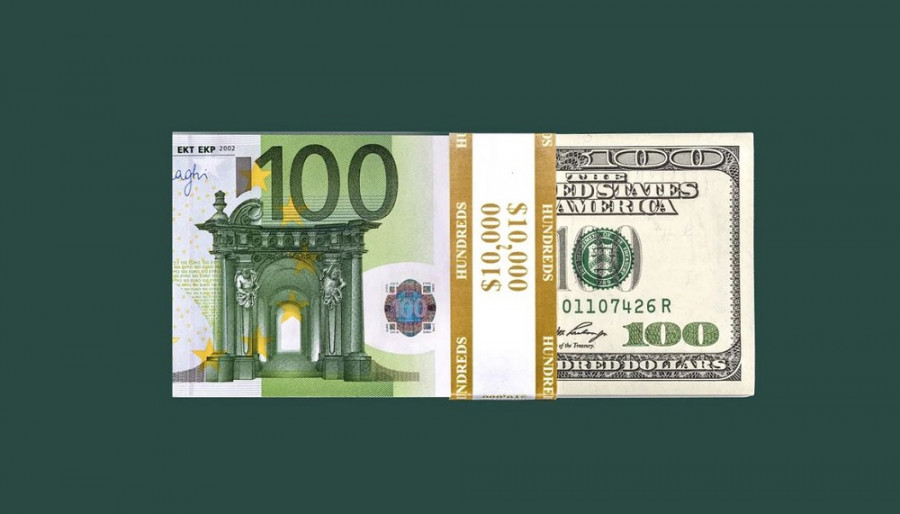The penultimate week of December promises to be not as eventful as the previous one but still interesting. Last week, the Federal Reserve and the European Central Bank delivered their verdict, outlining their intentions: Fed officials unexpectedly took a dovish position, while the ECB assured the markets that in the foreseeable future (at least in the first half of 2024) all parameters of monetary policy will remain unchanged. Obviously, the most important economic reports are capable of adjusting the position of central banks – bringing closer or pushing back the first rate cuts by the Fed/ECB.
Therefore, each more or less important release will now be viewed through the prism of possible decisions by the central banks in the coming year. Let's consider the main events of the upcoming week.
Monday:
At the start of the new trading week, reports from the IFO Institute may garner investor interest. The IFO Business Climate Index in Germany measures business sentiments and conditions in this country. According to preliminary forecasts, the IFO Business Climate Index in December is expected to rise to 87.6 points. The increase is quite small (in November, the indicator was at 87.3), but the trend itself is important: after four months of decline, the indicator demonstrates an upward dynamic (in this case, if the index meets or exceeds the forecast for the fourth consecutive month). The IFO Economic Expectations indicator should demonstrate a similar trajectory.

In addition, ECB representatives – Isabel Schnabel and Philip Lane – will speak. They may complement what has already been said – that the ECB is ready to keep interest rates at the current level until inflation approaches the 2% target level. Lane has repeatedly stated that despite the downtrend in key inflation indicators, it is still too early to celebrate victory over inflation. If he reiterates such theses, the euro will receive some support, in light of the recent ECB meeting.
Tuesday:
On Tuesday, December 19, we will learn the final estimate of the eurozone inflation data for November. According to forecasts, the final estimate will coincide with the initial one – an increase in the Consumer Price Index by 2.4%, and the core index by 3.6%. This report will influence EUR/USD only if the final data differs from the initial ones.
During the US trading session, a report on the US real estate market will be published – the volume of issued building permits. In November, this indicator is expected to decline to -1.2%. The volume of completed construction of new homes should also decrease by 0.8%.
Wednesday:
The main report on Wednesday is the Consumer Confidence Index, which will be announced during the US session. In July, the indicator reached a yearly high of 114.0. However, then followed a three-month decline, as a result of which the index hit a yearly low in October (99.1). The indicator slightly recovered (102) in November, and it is also expected to rise further up to 104.1 in December.
A report on existing home sales in the United States may also garner investor interest. The indicator has been in negative territory since February. The volume is also expected to decrease by 0.5% year-on-year in November.
Thursday:
On Thursday, December 21, the final estimate of US GDP growth in the third quarter will be published. The second estimate was better than the initial one (5.2% instead of 4.8%). However, no surprises are expected this time – according to the majority of experts, the final verdict will coincide with the second estimate of the indicator (i.e., 5.2%). In this case, traders are likely to ignore the data.
In addition, we will receive secondary data on the US labor market. According to forecasts, the number of initial claims for unemployment benefits should increase by 215,000 for the week. Over the past three weeks, the indicator has shown an upward trend, reaching 221,000, but last week it decreased to the 202,000 range. If this indicator resumes its growth, it will exert background pressure on the greenback.
Friday:
The last day of the trading week will be the most eventful day. The core PCE index will be published in the United States. As known, this is a crucial inflation indicator closely monitored by Fed officials. According to preliminary forecasts, the annual core PCE index will decrease to 3.4% (the lowest value since May 2021). After reaching 4.3% in July, this indicator sharply declined to 3.8% in August, then to 3.7% in September, and 3.5% in October. According to most experts, in November, the indicator will decrease again, this time to 3.4%. This fact will exert moderate pressure on the US currency. However, if the indicator falls into the "red zone," the greenback may face renewed selling pressure, providing the bulls with another reason for an upward move.
Conclusions:
In general, the current fundamental background supports the euro. The pullback on Friday was due to weak PMI indices and, specifically, the "Friday factor." However, the Fed's dovish position will continue to weigh on the dollar, especially if the core PCE index again demonstrates a downtrend. In turn, the ECB acted as a supporter of the euro by refuting rumors of easing monetary policy in the near future.
This fundamental outlook suggests that the bulls are likely to regain initiative on the pair soon and attempt to conquer the 1.10 level once again. To achieve this, not only do they need to surpass but also consolidate above the resistance level of 1.1020, which corresponds to the upper line of the Bollinger Bands indicator on the 1D chart. In my opinion, selling the pair is inherently unreliable, given the USD's vulnerable position.
The material has been provided by InstaForex Company - www.instaforex.comfrom Forex analysis review https://ift.tt/vGbr9EP
via IFTTT
